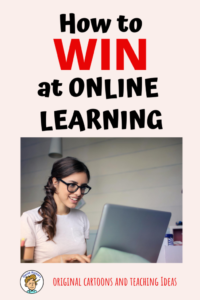
All ELA teachers want to develop their students into good readers. That not only involves building the love of reading but also involves developing critical reading skills in the classroom. We want our students to be able to read critically and analyze a passage, which involves taking a passage apart and seeing how it works. In short, we want students to not only understand what they are reading, but also how the author accomplished their goal through literary devices, syntax, diction, and other skills.Annotation is one way we can get students to analyze the text, but frequently students need a more structured way to analyze a passage. Something that gets them looking differently at a text in ways that annotation doesn’t provide. I have adapted two strategies from the book Writing Analytically by David Rossenwasser and Jill Stephen to get kids interacting with a passage of text in meaningful ways. =


Strategy #1: The Method
This strategy, called “The Method,” is modified from the Analytical Moves section from Rosenwasser and Stephen’s book by adding a few tweaks. With this technique, students look for patterns and repetitions in a passage. Students will need a sheet of paper. Here’s how it works:
- Step 1: List the exact repetitions of words that occur in the passage and count them.
- Step 2: Make a list of similar words, either words that are synonyms, or words that are closely related.
- Step 3: Create a T-chart in which you list binary oppositions found in the text – words that are opposite in meaning or tone.
- Step 4: Determine the primary opposition that occurs in the passage, such as good vs. evil, male vs. female, or rich vs. poor.
- Step 5: Determine how this opposition is significant to the novel or play.
- Step 6: Discuss what the students found, either in small groups or as a class.
A lot of times The Method works well for the opening few paragraphs of a novel, when the setting and themes are established. I’ve done it this way for Their Eyes Were Watching God. It also works really well for passages from Shakespeare, such as the prologue to Romeo and Juliet or Iago’s monologues from Othello. There are plenty of passages from Laurie Halse Anderson’s Speak that would work well. However, not every passage will work. You have to look for a passage that has the repetition and binary opposition present. You also don’t want to give students a passage that’s too long – a few paragraphs are best.
Strategy #2: So What?
This strategy helps students see not only what’s important in a passage, but also why it’s important. Students will need a sheet of paper.
- Students should divide their paper into three sections. The first section should be labeled “Observations.” The second and third columns should both be labeled “So What?”
- The first section is for observations – things that happen in the passage that are important, and are easily proven to be there. This is the basic level of understanding – what happens in the passage that’s significant?
- In the next column, students take their observations and answer the question “So What?” Why is this event significant? What are the implications behind what happened?
- In the final column, students will take the answer to the first “So What?” and ask “So What?” again. They will try to come to some conclusion about what happened. In the words of Rosenwassen and Stephen: “we look at the evidence and draw a conclusion that is not directly stated by follows from what we see.”
- Discuss their findings in small groups or as a whole class.
While this works well for passages that students have encountered before, it also works well for passages that students have not read yet. It’s especially good for passages where there is a specific point the author is making. A good passage for this activity, for example, would be Chapter 2 of The Hate U Give when Starr and Khalil are pulled over by the police. It’s obvious that Angie Thomas wants us to think a certain way about the encounter. The “So What?” exercise gets students thinking about the implications of the event and what conclusions they can draw from it.
Final Thoughts
If you need a quick exit slip that indicates how well your students are doing with thinking critically about a passage, either of these two methods will tell give you a glimpse at how well students can analyze, as well as a general sense of how well they understand the novel or play.
Like any strategy, neither of these exercises are one-and-done. Like with any skill, students will benefit from repeated practice until this level of analysis becomes natural to them. Once we have students analyzing the structure of a passage and the author’s intent, we are developing in them the ability to flourish as skilled readers.
Here are some other blog posts you might enjoy:
Writing Rubrics That Give You Back Your Weekends
Building Better Topic Sentences
Mini Timed Writings: Getting Students to Write More Without More Grading
A Workshop Approach to Essay Planning
Learning should be fun! Check out my Teachers Pay Teachers store for fun resources like the ones you see below.







